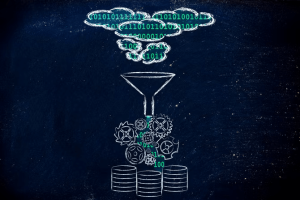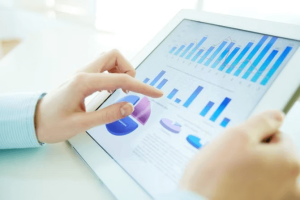Introduction: The Power Behind Informed Decision-Making In today’s data-driven world, information is power, and data analysis is the key to unlocking its potential. From tech giants like Google to small businesses and even the realm of sports, data analysis has become a universal language that transcends industries and scales. In this article, we’ll demystify data
Introduction: The Power Behind Informed Decision-Making
In today’s data-driven world, information is power, and data analysis is the key to unlocking its potential. From tech giants like Google to small businesses and even the realm of sports, data analysis has become a universal language that transcends industries and scales. In this article, we’ll demystify data analysis, exploring its various facets, methods, and its profound importance in shaping decisions. Join us on this enlightening journey into the world of data analysis!
What Is Data Analysis?
At its core, data analysis is the process of harnessing the power of data through analytical and statistical tools. This entails deciphering useful information hidden within the vast sea of data. Imagine it as a treasure hunt where you use tools like R, Python, or even the familiar Microsoft Excel to sift through data and uncover valuable insights.
Key Points Table:
| Term | Description |
|---|---|
| Data Analysis | The process of extracting valuable insights from data |
| Tools | R, Python, Microsoft Excel |
| Outcome | Summaries, visual representations (e.g., charts) |
Data analysis doesn’t stop at numbers; it extends to the art of data visualization, where tools like Tableau and Microsoft Power BI come into play. These tools transform data into captivating visuals, making complex information easier to digest.
Visual Table:
| Tool | Functionality |
|---|---|
| Tableau | Transform data into visuals |
| Microsoft Power BI | Create engaging data displays |
How Is Data Analysis Performed?
Data analysis is a multi-step process that involves meticulous planning and execution. Let’s break down the essential steps:

Image by https://www.makeuseof.com/
1. Defining Objectives: Begin by setting clear objectives. The more precise your objectives, the better your results will be.
2. Posing Questions: Identify the questions you want your data to answer. This step is crucial in selecting the right analysis tools.
3. Data Collection: Gather relevant data sources. In this example, we might collect data from sources like DMV records, accident reports, insurance claims, and hospitalization details.
4. Data Scrubbing: Clean and convert raw data into a usable format. This step ensures that data analysis tools can effectively process the data.
5. Data Analysis: Import the cleaned data into your chosen analytical tools. Explore the data, identify patterns, and answer your questions. This is where the magic happens!
6. Drawing Conclusions: Summarize your findings, whether in reports, visuals, or both, to make informed decisions.
Data Mining
Definition: Data mining is a process that involves the discovery of patterns, relationships, or insights within extensive datasets. It utilizes various techniques from statistics, artificial intelligence, and machine learning to extract valuable information from raw data.

Image by https://www.makeuseof.com/
Importance: Data mining helps organizations make informed decisions based on historical data. By identifying patterns and trends within large datasets, businesses can improve their operations, detect anomalies, and optimize processes.
Methods: Some common methods and algorithms used in data mining include:
- Clustering: Grouping similar data points together.
- Classification: Assigning categories or labels to data based on patterns.
- Regression: Predicting numerical values based on historical data.
- Association Rule Mining: Identifying relationships between variables.
Applications: Data mining finds applications in various fields, including:
- Retail: Analyzing customer purchase patterns to optimize inventory and marketing strategies.
- Healthcare: Identifying disease risk factors and improving patient care.
- Finance: Detecting fraudulent transactions and predicting stock market trends.
Text Analytics (Text Mining)
Definition: Text analytics, also known as text mining, focuses on extracting valuable insights from unstructured textual data. It involves processing and analyzing text data to uncover patterns, sentiments, and valuable information.

Image by https://www.makeuseof.com/
Importance: With the vast amount of text data available today, text analytics is crucial for making sense of unstructured information. It enables businesses to understand customer feedback, sentiment analysis, and automate text-related tasks.
Methods: Text analytics methods include:
- Text Preprocessing: Cleaning and preparing text data for analysis.
- Sentiment Analysis: Determining the sentiment or emotion expressed in text.
- Named Entity Recognition: Identifying names of people, places, and organizations in text.
- Topic Modeling: Grouping similar texts based on common themes or topics.
Applications: Text analytics is widely used in:
- Social Media: Analyzing user comments and reviews for sentiment and trends.
- Customer Service: Automating responses to customer inquiries.
- Legal and Compliance: Sorting and analyzing large volumes of legal documents.
Business Intelligence
Definition: Business intelligence (BI) involves the use of data analysis tools and techniques to transform raw data into actionable insights. BI enables organizations to make informed strategic and tactical decisions.

Image by https://www.makeuseof.com/
Importance: BI provides decision-makers with a holistic view of their organization’s data, facilitating data-driven decision-making. It helps in understanding market trends, customer behavior, and operational efficiency.
Methods: Business intelligence methods and tools include:
- Data Warehousing: Storing and organizing data for analysis.
- Data Dashboards: Visualizing key performance indicators (KPIs) in real-time.
- OLAP (Online Analytical Processing): Analyzing multidimensional data.
- Ad Hoc Reporting: Generating custom reports based on specific requirements.
Applications: Business intelligence is used for:
- Market Analysis: Identifying new market opportunities and potential threats.
- Financial Planning: Creating budgets, forecasts, and financial reports.
- Performance Monitoring: Tracking and improving operational efficiency.
Data Visualization
Definition: Data visualization is the practice of representing data in visual formats such as charts, graphs, and maps. It aims to make complex data more understandable and accessible to a wide audience.

Image by https://www.makeuseof.com/
Importance: Humans are inherently visual learners, and data visualization makes it easier to interpret data quickly and effectively. It simplifies complex information, making it suitable for decision-making.
Methods: Data visualization methods include:
- Bar Charts: Displaying categorical data.
- Line Charts: Showing trends over time.
- Pie Charts: Representing parts of a whole.
- Heatmaps: Visualizing data density.
Applications: Data visualization is applied in various domains:
- Business: Presenting financial data and performance metrics.
- Healthcare: Visualizing patient data and medical trends.
- Geospatial Analysis: Mapping data for location-based insights.
Driving Informed Decision-Making
The influence of data analysis stretches far and wide. It helps companies make strategic choices about product placement, pricing, and market expansion. From heat maps to pivot tables, it provides a visual roadmap to navigate the ever-expanding sea of data.
In a world drowning in data, data analysis is the lifeboat that ensures we reach our destination safely. It empowers knowledge seekers, like you, to unlock the hidden potential within data, turning information into actionable insights. Whether you’re a business owner, a healthcare professional, or a sports enthusiast, data analysis is the compass that guides you toward making informed, impactful decisions.

















Leave a Comment
Your email address will not be published. Required fields are marked with *